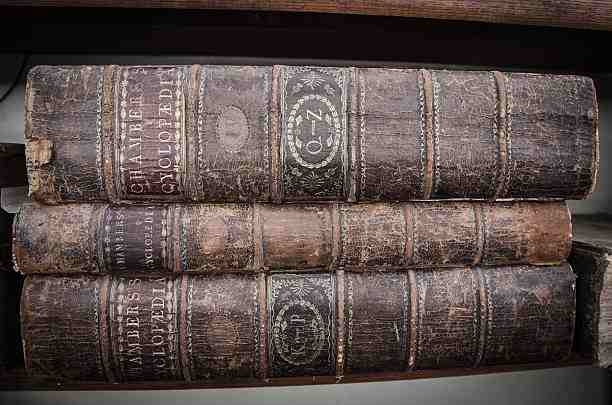Whispers of the Forbidden: Mystery of Cursed Books, Secret Knowledge, and the Legacy of Nilavanti
- enrouteI
- September 12, 2024

Books have been regarded as people’s most reliable and greatest friends of all time, providing wisdom, comfort, and inspiration throughout history. They are regarded as doorways to information and imagination, with a proven potential to educate and entertain. What if, instead of being our greatest allies, books had the ability to cause harm, curse, and destroy? What if certain texts carried within them dark forces that could cause chaos in the lives of individuals who attempted to turn their pages? Well, there exists a darker side to the world of books— texts that are considered prohibited or even cursed.
The books, which fall under the category of taboo or forbidden texts, hold a unique position in global and tribal cultures. These texts, whether due to their content, their origins, or their supposed effects, occupy a controversial and often feared place in literary and cultural history. Therefore, in this paper we will discuss the concept of taboo and cursed books, examining why certain texts are shrouded in mystery and fear. And things that are believed about these texts are real or just a myth. The focus will be on forbidden books within the Indian subcontinent with a detailed look on Nilavanti Granth.

Photo Credit: Sierra Koder / Unsplash
Taboo and Cursed Books: An Overview
The idea that a book can be cursed derives from the belief that written words hold power beyond mere communication. Words can enchant, deceive, or summon forces unseen or unknown. Historically, many cultures have revered or feared certain texts, believing that these books contain dangerous knowledge or occult practices. Due to these believes we see across the globe some such books have been burned, banned or kept somewhere hidden by higher authorities. While other such texts became the stuff of legend, surrounded by cultural beliefs and the mystical aura of their ability to cause harm and also containing mystical or supernatural powers. The power attributed to these books can be psychological, invoking fear of the unknown, or mystical, with stories claiming real-life consequences for those who dare to read them. Even the secrecy surrounding these texts contribute to their aura of danger. Because of these factors, we have very little knowledge on these texts, as very few people dare to read them due to their reputation of being cursed or taboo, and we also don’t know whether the information being provided is genuine or not.
In global literature, examples of cursed or forbidden books can be found in various traditions, from the Necronomicon in the works of H.P. Lovecraft to historical grimoires like The Grand Grimoire used by occultists. Both were banned by the authorities as they contained dangerous knowledge and can cause harm. However, here we will mainly talk about the cursed and mystical texts of Indian subcontinent and examine whether these truly possess powers or it’s just a myth.

©Michal Maňas via Wikimedia Commons
Mysterious and Cursed Texts of Indian Subcontinent
India’s literary tradition is rich and diverse which not only includes celebrated epics and scriptures, but also a lesser-known collection of taboo and mysterious texts. That are often believed to be cursed or contain a powerful force, one so strong that those who dare to read it may find themselves on the verge of madness or can bring misfortune and even death. These are commonly linked to occult practices and rituals that are believed to be too dangerous for common use. Below are some of the most notorious cursed books and texts from India, drawing from ancient, tribal, and occult traditions.
Nilavanti Granth- This enigmatic Marathi or Sanskrit text is not just a relic of ancient wisdom but it is also said to be cursed or contain a powerful force, Legends speak of scholars who, upon delving into its secrets, lost their grip on reality, consumed by the immense energy contained within its pages. It has been the subject of much debate and speculation. Some believe it to be a genuine mystical text containing profound knowledge, while others dismiss it as a myth or hoax. It is believed to contain information related to talking to entities or say summoning entities, also it includes some verses by which one can be able to talk to animals and birds and even can cure diseases. At the same time, some other sources describe it as a way to acquire supernatural powers. It consists of verses and teachings that cover a wide range of spiritual, occult, and mystical topics, including cures for diseases, yoga, devotion, and the nature of reality. It was banned by the British government during its rule in India because the government suspected that the book was being used for practicing the occult or increasing the superstitions among people.

Source- Scribd Original Nilavanti Granth
The exact origins and authorship of the Nilavanti Granth are not well-documented, which adds to its mysterious nature. According to some sources, it is believed to have been composed during the Gorakhnath period, in the Nath Sampradaya (a Shaivite sect) known for its emphasis on yogic practices and occultism. Also, some say it was originated by a woman who was rumoured to possess magical abilities which meant she was a Yakshini named “Nilavanti” or even some say it was written by Bhaskara Bhatt. There are many stories about this text, some of which are true and some are a mixture of imagination and folk beliefs. The believes surrounding this text about being cursed and it can cause harm to anyone who dare to read or can get immense power from it are often shrouded in secrecy. Another thing is that people consider it as some dangerous text, which is why they don’t dare to read it, and all of these rumours are circulated as a result. This lack of knowledge creates an environment where myths and superstitions can thrive. Or maybe we can say that the fascination with the Nilavanti Granth stems from human nature’s fascination with mysterious and forbidden objects. Its mysterious nature and aura of danger make it a subject of curiosity, whether or not people believe in its supernatural qualities, the myth itself is potent enough to inspire fear and intrigue. Another way of looking at this text can be as a text that represents forbidden knowledge or the boundary between the known and the unknown. Certainly, crossing these boundaries is considered as dangerous, or eventually, if you are not meant for such things it can lead to harm or destruction. It is believed that if you are a really advanced occult practitioner then only you may read this but it has its own consequences which we have already discussed. It may contain certain types of knowledge or meddling with forces beyond human understanding. So, maybe we can say that the book doesn’t possess supernatural powers, but rather symbolizes the risks associated with certain paths of inquiry.

Photo credit- Sergiu Vălenaș on Unsplash
At last, all we can say is that the Nilavanti Granth is a text that straddles the line between reality and myth, is difficult to categorize as either entirely real or purely mythical. Its secrecy and curse element make it a mysterious text. But we can conclude it as a mysterious text that may have roots in actual ancient practices while the layers of folklore and superstition surrounding it have likely exaggerated its perceived powers and dangers, reflecting a blend of cultural beliefs, historical ambiguity, and human fascination with the mysterious.
Besides Nilavanti Granth India has a lot of other texts that comes under the category of taboo or cursed texts like tantric traditions in India have long been associated with secretive and dangerous knowledge, and some such sects have their own texts for advance tantra practices that are dangerous for common peoples. Like texts of Nath Sampradaya, Aghori sects such as Vigyan Bharav Tantra and Kaulajnana Nirnaya which is a tantric text that describes advanced spiritual practices involving cremation grounds, offerings, and the use of body fluids. These texts are linked to left-handed tantra, and improper use of the rituals described is believed to cause severe consequences for the practitioner. We also have texts that are hidden or got lost due to their secretive knowledge like some of them have knowledge of curing diseases that actually work like Lal kitab and also in Athrava Veda we have this kind of knowledge.
In conclusion, all I want to say is that horror resides not only on screens and in cinemas, but also in books like Nilavanti, which have been feared for centuries. And the cursed or mysterious books are often associated with two themes forbidden knowledge and improper initiation. These texts are considered dangerous not because they bring harm but because they contain knowledge or rituals that challenges the natural order. The secrecy surrounding these books serves as a reminder that knowledge, especially esoteric, comes with a cost. The fear surrounding these books reflects a deeper truth: some knowledge is meant to be protected, hidden, or kept away from those who are not prepared to face its consequences.

Source- Etsy.com antique vintage books
Ultimately, the horror evoked by these texts is not just about the supernatural, but about human curiosity and the danger that lies in the pursuit of forbidden wisdom. Whether or not these books truly hold dark powers, their legacy as objects of fear and mystery continues to haunt us, reminding us that not all knowledge is meant to be found.
References-
- Bacon, Simon & Gomel, Elana. (2024). The Cursed Archive: Dangerous Texts, Deadly Communications, and Gothic Media. (ResearchGate)
- Fred Jenkins. Mysterious Manuscripts, Cursed Chronicles and Specters in the Stacks, University of Dayton.
- Cursed books and manuscripts. Moonmausoleum.com
- India’s Mysterious Book, Nilavanti Granth, kehna
- Stella Dupuis. The esoteric teachings of the Kaulajñananirnaya, Academia.edu




















